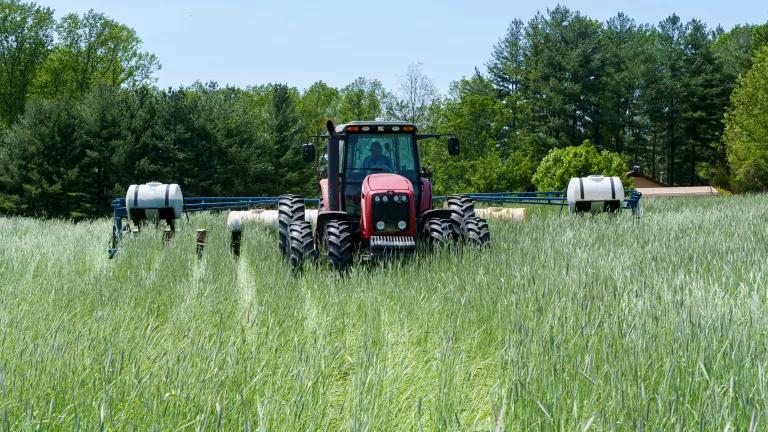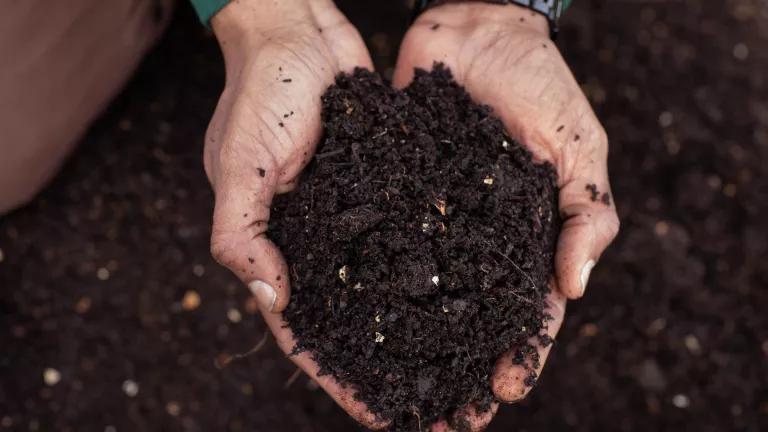National Goal Urged to Curb Livestock Antibiotic Use by 50%
For the first time since COVID-19 struck, presidential advisors just met in-person to discuss future pandemic threats. With recent evidence showing FDA efforts to curb livestock antibiotic overuse to help slow the global spread of deadly superbugs, NRDC is urging a national goal to curtail livestock antibiotic use 50% by 2025.

Concrete Targets, Measured Progress Are Needed to Kickstart Stalled Antibiotic Stewardship
The Presidential Advisory Council on Combating Antibiotic-Resistant Bacteria (PACCARB) met in Washington, DC on September 12th and 13th, its first in-person meeting since the start of the COVID-19 pandemic. HHS Secretary Becerra’s timely charge to the Council was for recommendations on how the US could and should improve its pandemic defenses.
Specifically, PACCARB was tasked with identifying any policy upgrades that would leave federal agencies better prepared for responding to, or even preventing altogether, a future pandemic caused by antibiotic-resistant bacteria -- sometimes called ‘superbugs’. NRDC offered its own recommendations to PACCARB in advance of the meeting. First, PACCARB should urge Secretary Becerra to establish a concrete, national goal for 50% reduction in the use of medically important antibiotics in food-producing animals by 2025, relative to a 2010 baseline. Achieving this goal would deprive the spreading superbug threat of its most important fuel: antibiotic overuse.
Second, we urged the PACCARB to recommend that FDA act immediately to ensure its annual reporting on veterinary antibiotic sales includes side-by-side reporting of sales on both a raw and "weight-adjusted" basis, which is described below. Five years ago, the FDA proposed that reporting weight-adjusted sales would be more accurate and informative than reporting raw sales alone. Its next annual sales report is due in December 2022. Unless it includes weight-adjusted sales in that report, FDA will be holding to its promise to "foster" veterinary antibiotic stewardship but at the same time failing to provide the means for measuring whether farm stewardship since 2009 (when sales reporting began) has improved, and by how much.
NRDC had prepared a new analysis before the meeting which forms the basis for our written comments. The full analysis will be published shortly. As summarized by Figure 1, the analysis is an apples-to-apples comparison of rates of antibiotic use by livestock producers in the United States and Europe, and how much they changed over a decade-long span from around 2011 to 2020. Our focus is on the livestock sector because three times as many antibiotics of human importance (“medically important”) globally are sold for livestock as for human medicine, according to estimates published in Science.
WEIGHT-ADJUSTED TRACKING AND ITS PUBLIC HEALTH IMPORTANCE
Superbugs have already evolved and spread to dangerous levels across the world. Experts recognize the most important factor fueling that spread has been the widespread overuse of antibiotics in raising livestock as well as in human medicine. Antibiotic use by livestock producers in different countries varies enormously. Higher rates of antibiotic use over time will drive greater spread of resistance, and higher risks to public health. Because resistance spreads easily across national borders, everyone has a vested public health interest in knowing which countries are good stewards (low-intensity users) of antibiotics and which are not. Yet the PACCARB agenda had almost no focus on the imperative for better U.S. tracking of antibiotic use.
Relatively few countries track antibiotic use at the farm level, however, and that includes the United States. Fortunately, at least 41 countries now report antibiotic sales for raising livestock, the large majority of them in Europe. These also include the United States. The position of the World Organization of Animal Health (WOAH), the animal counterpart to the World Health Organization, is that when farm-level antibiotics data are unavailable, information on livestock antibiotic sales can serve as the basis for estimating rates of actual antibiotic use.
Countries in Europe and the United States are both WOAH members. Since 2010, dozens of European countries have supplied the European Medicines Agency (EMA) with annual livestock antibiotic sales information; the EMA has then issued annual reports including both raw and weight-adjusted sales data for each of those countries individually, and also for livestock production aggregated across Europe as a whole. As a result, estimated rates of antibiotic use are available for 25 European countries back to 2011, and for some of them back to 2005. The EMA employs a now-standardized weight-adjustment method it first developed in 2010.
Since 2009, the FDA has only issued annual reports which include raw antibiotic sales, and not weight-adjusted sales, despite the United States also being a member of the WOAH. For our analysis, NRDC weight-adjusted US sales data available since 2009, using the EMA methodology. We then compared the US figures to the weight-adjusted sales already reported by the EMA for Europe. Figure 1 portrays those comparisons over the same span of time, 2011 to 2020.
In general, rates of livestock antibiotic use have declined less, and less consistently in the United States than they have across Europe. Specifically,
- The rate of antibiotic use in livestock production aggregated across 25 European countries fell 43.2% from 2011 to 2020, compared to a decline of 30.4% in U.S. livestock production.
- The greater-than-43% reduction livestock antibiotic use in Europe came several years after the European Union had already banned use of these drugs for growth promotion, which took place in 2006. The FDA finally made it illegal to use medically important antibiotics for growth promotion in the United States in January 2017. Since then, and in marked contrast to Europe, there has been zero net decline in the rate of use of these precious medicines within the U.S. livestock sector. Instead, NRDC estimates the overall rate of use to have risen 5.4% from 2017 to 2020.
U.S. efforts to reduce antibiotic use in livestock have not worked as well as those in Europe since 2011. Since 2017, they have had no measurable impact on antibiotic stewardship or use reduction. Therefore, we urge Secretary Becerra to kickstart public health protections by setting a national target for at least a 50% reduction in livestock antibiotic use by 2025, relative to baseline levels. According to published data from Europe, most of Europe’s top livestock producers by 2020 had already reduced their rates of antibiotic use between 50% and 70%. The FDA could build accountability toward reaching a 50% reduction goal if, no later than December 2022, it simply reports annual livestock antibiotic sales on both a raw and weight-adjusted basis. The agency should quickly extend those weight adjustments to the entire twelve years of raw annual sales data (2009 to 2020) that it has issued to date.



